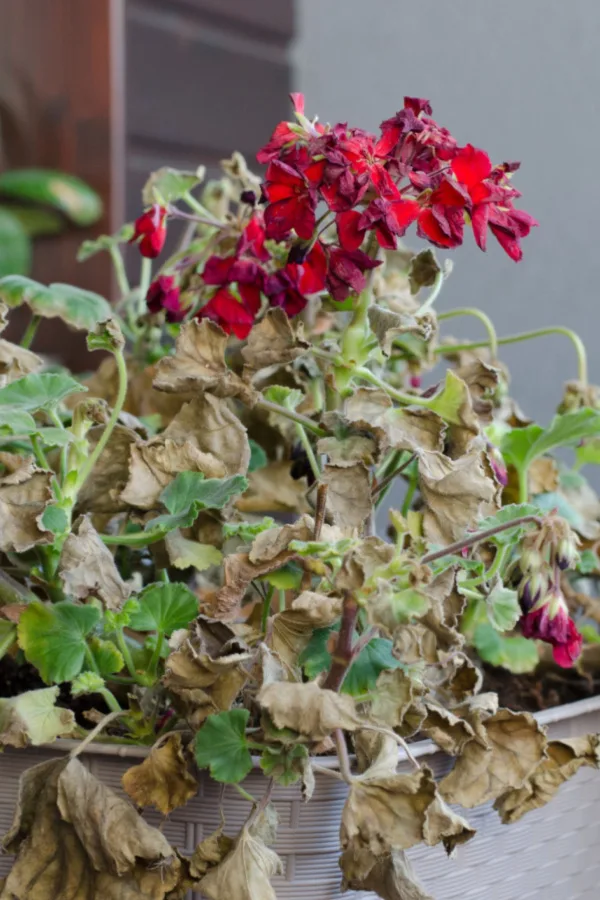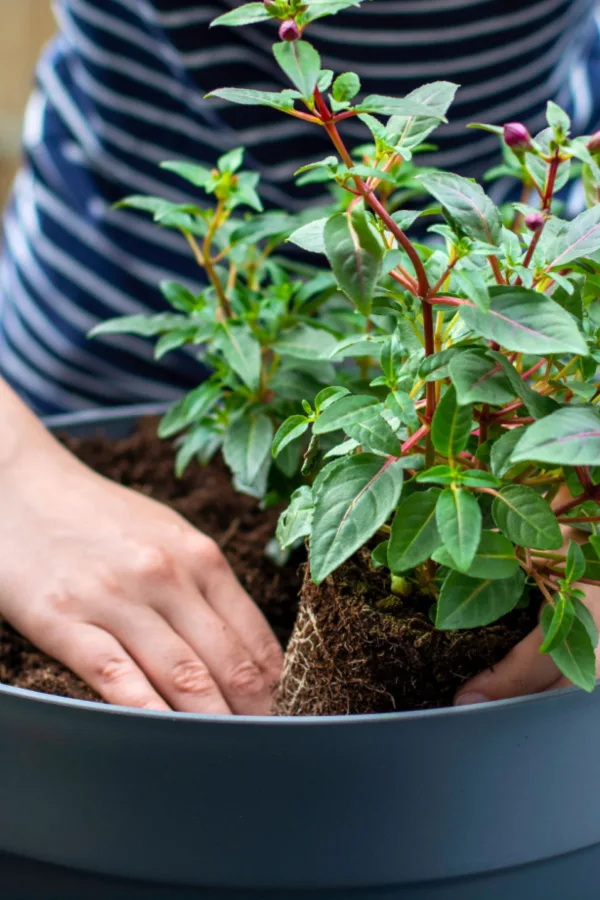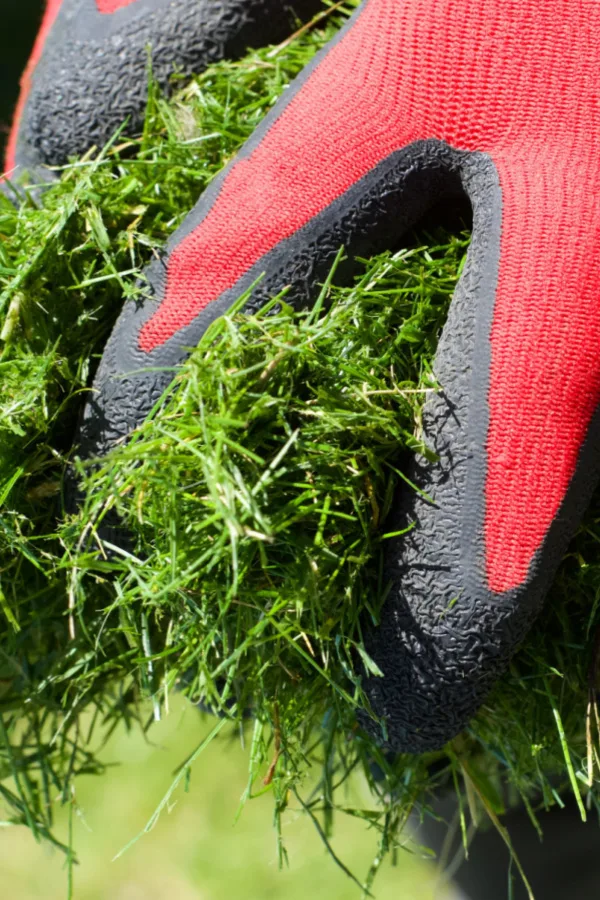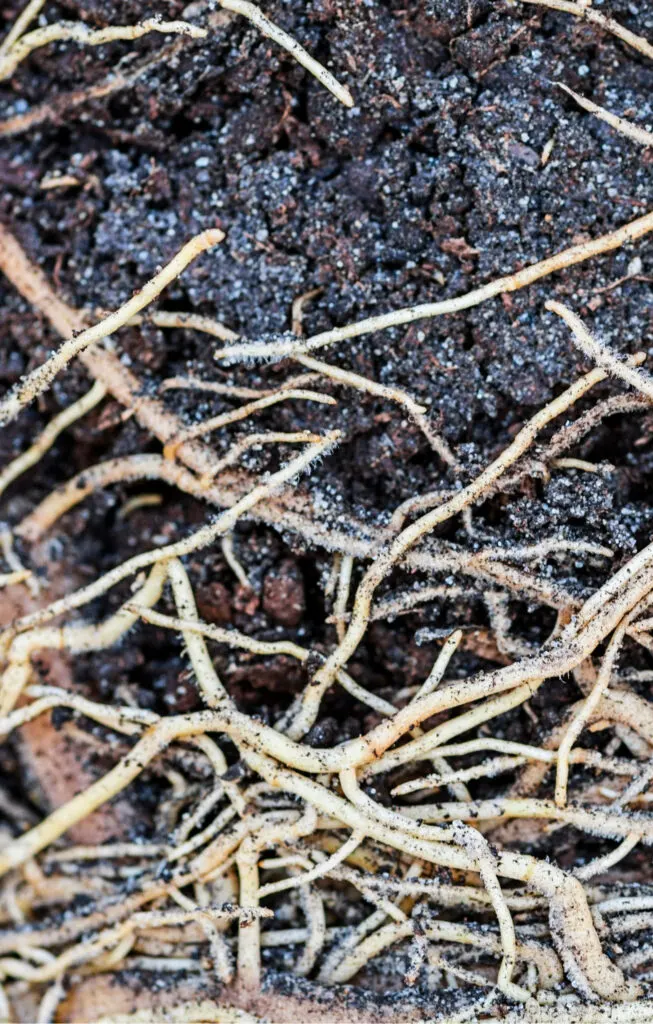What ever you do this fall, don’t toss those dying hanging baskets and container plants to the curb – instead, recycle and recharge your old potting soil to reuse it again next year! Not only is it easy to do, it can save BIG money too!
Autumn is closing in, and many of the potted baskets and pots that were once overflowing with life have finally reached their end. Unfortunately, at this point, no amount of water, fertilizer, or TLC is going to bring them back.
But that doesn’t mean the soil or the decaying plants should be tossed to the curb. Even though the soil’s nutrients have been depleted and the plant’s foliage and stems might be all but lifeless, they both still have tremendous value!

Let’s face it, potting soil is expensive. And getting more and more pricier with each passing year. Potting up plants can take a lot of soil, and having to replace it every year can really hit the budget hard. But here is the good news, you don’t have to!
By recycling, recharging and reusing your old potting soil, you can save on buying bags and bags of new potting soil every year. Even better, you can create incredibly rich and fertile potting soil that can power your plants even more. And best of all, the process is easier than you might ever think!
How To Reuse Old Potting Soil
One thing is for sure, you can’t simply just save and reuse old potting soil from year to year. The soil in containers will lose most of its structure and nutrients during a growing season.
If you were to simply plant new plants in your old soil, there just isn’t enough power in the dirt to grow healthy plants. Especially if you happen to be growing the same plants that use and need the same nutrients to grow.
So how do you recharge that old soil? By creating a simple potting soil compost pile that can revitalize the soil with ease! It’s not only easy to do, it also doesn’t require a lot space. In fact, you can do it in a small corner of your garden, a small compost bin, or even a large trash can or two!

Creating A Potting Soil Compost Pile – How To Reuse Old Potting Soil
Although you can recycle old container soil and spent plant foliage in a traditional compost pile, by creating a separate potting soil compost pile, you can keep the soil light and loose for use the following spring.
In a traditional compost pile, a wide range of materials are added, some of which won’t break down rapidly. But in a potting soil compost pile, you add only simple, small and powerful ingredients that can break down quickly. This allows the pile to be ready to use the following spring.
In place of making true compost, you are are instead recharging the soil as a whole. This keeps the consistency and light structure needed to create great potting soil.
Creating A Potting Soil Compost Pile – How To Reuse Old Potting Soil
You can create your potting soil compost pile anywhere. A small space in the corner of your garden works great. You can also build your pile in a traditional single compost bin, or even a large drum or trash can. (See : How To Build An Inexpensive Single Compost Bin)
More than anything else, you simply need a dedicated space to pile up the ingredients. Make sure the pile can drain so it does not become overly wet or saturated. If using a large bin or trash can, that means poking a few holes in the bottom to allow moisture to get out.
Once you have your pile location set, start by adding in your old potting soil and plant debris. Before adding, chop up the foliage and stems into small pieces. The key to success with a potting soil compost pile is to keep everything you add as small as possible. This allows everything to break down and incorporate quickly.

Chopping Up The Ingredients – How To Reuse Old Potting Soil
Although the leaves, stems and flowers may be dead or dying, they still have nutrients to give back to the soil. And the smaller you chop them up, the quicker they will break down into the potting soil.
We use our lawn mower with a bag attachment to chop ours. If you happen to have a chipper / shredder, they are wonderful for this as well. In the last few years, shredders have come a long way. There are now several electric models on the market that do wonders for chopping up all kinds of compost ingredients! (See: WORX Electric Leaf & Debris Shredder)
Next, break apart all of the roots and soil in the pots and containers. Many container roots at this point can be quite fibrous. But again, by chopping them up they will decompose quickly. Now it is time to add a few key but powerful ingredients to recharge that soil!
Recharging Your Potting Soil Compost Pile – How To Reuse Old Potting Soil
To recycle and energize your soil, there are a couple of great additions that really work wonders.
The best ingredient to add of all is fresh compost. Fresh compost is teeming with nutrients, good bacteria and microorganisms. All of these ingredients help to power the pile while breaking down organic materials quickly.

As a general rule of thumb, mix in about 1 part fresh compost for every 5 to 10 parts of potting soil debris (10 to 20%). If you don’t have fresh compost, bagged compost will work here as well. (See : How To Make Great Compost In The Fall)
This is also a great time to add other organic materials that break down fast. At the top of the list are shredded leaves, green grass clippings and coffee grounds and egg shells. All of these are small or can be finely shredded or pulverized.
They also break down fast and are high in nutrients – which are perfect for powering up your potting soil! Again, the key is to keep any additions as small as possible, and to mix them into the soil thoroughly.
Maintaining Your Potting Soil Pile Through Winter – How To Reuse Old Potting Soil
Through the course of the fall and early winter, continue to add the above ingredients as you can. With each addition, mix the new ingredient into the center of the pile. Stop adding any material when winter rolls around.
As the weather allows, turn the mix in your pile a few times each week. Just like a compost pile, the organic material will heat up and break down faster any time oxygen is added by turning. By keeping all of the added ingredients extremely small, by spring, the pile will look and feel like ultra-rich potting soil.

Reusing The Potting Soil In Spring- How To Recycle Hanging Basket & Container Soil
As spring rolls around the mix will be ready to use! We use it in our seed starting mix, as well as for potting up our new hanging baskets and container plants.
It can be used straight or mixed in with 25% new potting soil if it needs to be lightened up. Usually, if you have added enough organic matter, it will be light and ready to use as is. As with our homemade potting soil, we always mix in a few cups of worm castings for every 5 gallon bucket of potting soil we use.
They are simply unbelievable when it comes to powering up soil. They are the perfect slow-release fertilizer for nearly every plant, and will do wonders for powering your plants! Product Link : Worm Castings
It is important to add these at the the time of planting so the nutrients can go right to work. If you add them in the fall, they will incorporate into the mix, but will not be as powerful as using them at planting time.
Here is to taking the time to recycle your hanging basket and container soil, and growing with even less expense next year! Happy Gardening – Jim and Mary.
Jim and Mary Competti have been writing gardening, DIY and recipe articles and books for over 15 years from their 46 acre Ohio farm. The two are frequent speakers on all things gardening and love to travel in their spare time.
As always, feel free to email us at thefarm@owgarden.com with comments, questions, or to simply say hello! You can sign up for our free email list in the subscribe now box in the middle of this article. Follow us on Facebook here : OWG Facebook. This article may contain affiliate links.
